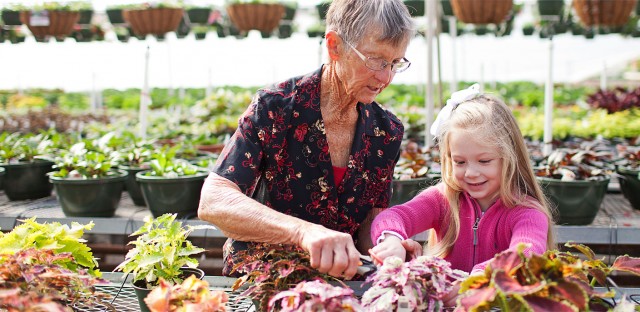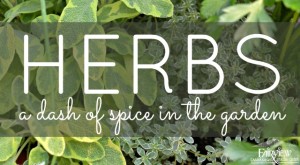A Complete Guide to 15 Common Herbs and Their Uses
Fresh herbs are a great addition to gardens for flavor, fragrance and even more. At Fairview Garden Center, we offer many types of herbs—from classics like sweet basil and English thyme to unique varieties like lemon basil and silver-edged thyme. In this herbs guide, we’ll explore 15 of the most popular, how to best grow them, their uses and fun facts.
1. Basil (Ocimum basilicum)
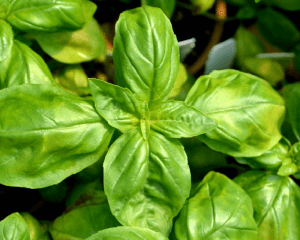
Basil is one of the most popular, versatile herb types thanks to its aromatic leaves and culinary potential. At Fairview Garden Center, we carry a variety of basil types, including Greek Columnar, sweet basil, Thai basil, lemon basil and cinnamon basil.
How to Grow Basil
Basil thrives in warm climates and cannot tolerate temperatures below 40°F. Plant it in well-drained soil, whether in a garden bed or a container with proper drainage. If using a pot, add pebbles or terra-cotta at the bottom for better airflow. Regularly harvesting full sections of basil every few weeks will encourage new growth, and harvesting basil before it flowers will help preserve its flavor.
How to Use Basil
Different basil varieties complement different cooking types. For example, Greek Columnar is excellent for Italian cuisine, while Thai basil can add flair to Asian recipes. To store basil for use later, keep it sealed in the refrigerator’s crisper for up to a week. It also freezes well—simply wash and air dry the leaves before storing them in a freezer bag.
Fun Fact About Basil
Basil is considered to be the most sacred plant after the lotus in India.
2. Catnip (Nepeta cataria)

Best known for its effects on cats, catnip also works as a natural insect repellent and produces beautiful flowers of its own.
How to Grow Catnip
Catnip is a perennial herb that thrives in full sun and well-drained soil. If planting in containers, which is often recommended to prevent it from overtaking garden beds, you can ensure proper drainage by adding pebbles or broken terra-cotta at the bottom.
How to Use Catnip
- Give your cat a few leaves at a time, spacing them out every few hours (or even every few days) depending on their reaction.
- Plant it around your outdoor areas to create a natural insect-repellent barrier.
CREATE A MORE PET-FRIENDLY GARDEN
Fun Fact About Catnip
Historically, catnip was believed to repel rats.
3. Cilantro (Coriandrum sativum)
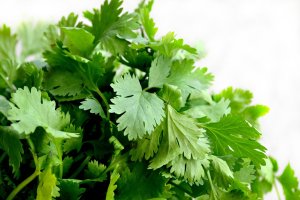
A staple in Mexican and Thai cuisine, cilantro is a unique dual-use plant. While its fresh leaves can add flavor to dishes, its seeds—known as coriander—are a distinct spice with an entirely different taste.
How to Grow Cilantro
Cilantro is a fast-growing annual that thrives in cool weather, partial-to-full sun and well-drained soil. It should be planted in early spring or fall, as it bolts quickly in summer heat. If you need a summer alternative, consider culantro—a heat-tolerant herb with a similar flavor.
How to Use Cilantro
- Add fresh leaves to meals for a citrusy, peppery flavor.
- Ground up dried flower heads to make coriander spice.
- Plant it in your garden for its insect-repellent properties.
Fun Fact About Cilantro
Coriander seeds were discovered in Egyptian tombs dating back to 1325 BC.
4. Chives (Allium schoenoprasum & Allium tuberosum)

Chives are a hardy perennial herb native to Europe but capable of thriving in various climates. They grow back quickly after being harvested and add a mild onion or garlic flavor to dishes depending on the type (onion chives have round stems, while garlic chives have flat stems).
How to Grow Chives
Chives prefer well-drained soil, partial sun and regular harvesting to encourage new growth. They produce attractive edible flowers in their second year. To store for long-term use, chives can be frozen or dried.
How to Use Chives
Add them to potato and vegetable dishes.
Fun Fact About Chives
Chives were used by the ancient Romans to treat sore throats and sunburns.
LEARN WHAT MAKES CHIVE A “BAD NEIGHBOR”
5. Fennel (Foeniculum vulgare)

Fennel is commonly grown as a host plant for caterpillars, though it is also valued for its strong aroma and culinary versatility. There are two main types: green fennel, an annual herb, and bronze fennel, a perennial that can grow up to six feet tall.
How to Grow Fennel
Native to Asia, fennel is well-suited for warm climates, full sun and well-draining soil.
How to Use Fennel
Adding a licorice-like flavor to foods like fish and Italian dishes.
Fun Fact About Fennel
In the 10th century, fennel was hung on doors to ward off witches.
SEE THE BEST FALL AND WINTER HERBS
6. Dill (Anethum graveolens)
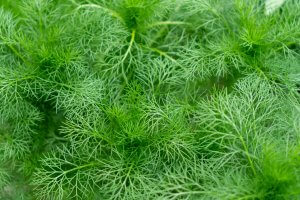
Dill is a versatile annual herb with a distinctive flavor. Originally popular for pickling, it is now often used in salads, dips, vegetables, fish, eggs and more on its own.
How to Grow Dill
Plant dill in spring after the risk of frost has passed. It thrives in containers in non-direct, full-to-partial sun with well-draining soil. It doesn’t freeze well, so it should be stored in a cool, dark, well-ventilated area after the summer to preserve its flavor.
How to Use Dill
In addition to dill’s more common uses, the seeds in particular work great in stews and soups
Fun Fact About Dill
Pickling cucumbers date back over 4,000 years to the ancient Mesopotamians.
7. French Tarragon (Artemisia dracunculus)
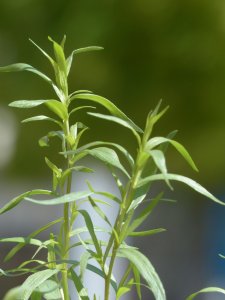
French tarragon is a fragrant herb known for its subtle licorice-like flavor. Unlike the more bitter Russian tarragon, French tarragon is very popular for sauces and dressings.
How to Grow French Tarragon
French tarragon thrives in full sun and well-drained soil. It prefers dry conditions, so avoid overwatering. Since it rarely produces usable seeds, it’s best propagated by root division or cuttings.
How to Use French Tarragon
- Pairs well with chicken, fish and egg dishes.
- Infuse it into vinegar for a subtle flavor change.
Fun Fact About French Tarragon
In medieval times, tarragon was believed to prevent fatigue.
8. Scented Geranium (Pelargonium)
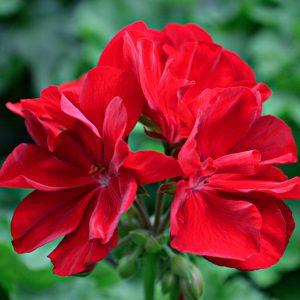
Scented geranium is a beautiful, aromatic annual plant that adds fragrance to gardens and indoor spaces. With a variety of scents ranging from lemon to rose, it’s a favorite for cooking, decorating and naturally repelling insects.
How to Grow Scented Geranium
With many types being native to South Africa, scented geranium thrives in full sun and well-drained soil. It prefers warm temperatures and should be brought indoors during colder months. Regular pruning will encourage better growth and prolonged blooming.
How to Use Scented Geranium
- Add insect-repelling fragrance to your home or yard.
- Enhance teas, desserts and potpourris (just remember to remove the leaves before using).
- Leaves can be infused into oils or dried for sachets.
Fun Fact About Scented Geranium
In the 19th century, scented geraniums were imported from South Africa to France to be used as a main ingredient in perfumes.
9. Lavender (Lavandula)
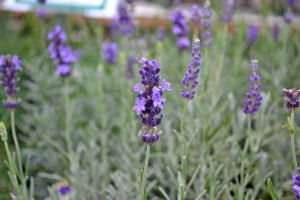
Lavender is well-loved for its calming scent and vibrant purple flowers. It’s a staple in aromatherapy, skincare and culinary practices.
How to Grow Lavender
Native to the Mediterranean and the Middle East, lavender flourishes in full sun and well-draining, sandy soil. It requires minimal watering and benefits from regular pruning to maintain its shape and encourage blooms.
How to Use Lavender
- Common in aromatherapy for relaxation.
- Adds floral notes to teas, desserts and savory dishes.
- Dried lavender can help freshen linens.
Fun Fact About Lavender
The name “lavender” comes from the Latin word “lavare,” meaning “to wash,” referencing its historical use in Roman baths.
10. Mint (Mentha)
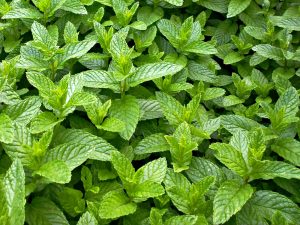
Mint is a fast-growing herb with a refreshing scent and taste. It’s a versatile ingredient in beverages, cooking and natural remedies.
How to Grow Mint
Mint thrives in partial to full sun with moist, well-drained soil. Due to its aggressive growth, you should consider planting it in containers versus garden beds.
How to Use Mint
- Places fresh or dried in teas, cocktails and desserts.
- Planted as a natural insect repellent.
- Added to savory dishes like lamb and salads or sweet dishes like ice creams.
Fun Fact About Mint
Ancient Greeks and Romans used mint as a natural breath freshener.
11. Oregano (Italian and Greek)
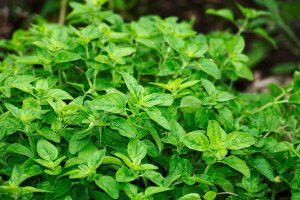
Both Greek and Italian oreganos are classic herbs in cuisine, offering robust flavors packed with health benefits.
How to Grow Oregano
In North Carolina, Italian oregano is a tender perennial and Greek oregano is a perennial. They both grow best in full sun with well-drained soil and generally require minimal watering once established.
How to Use Oregano
- Used fresh or dried in soups, sauces and meats.
- Brewed into tea for respiratory support.
Fun Fact About Oregano
Ancient Greeks and Romans believed oregano symbolized happiness and wove it into bridal crowns.
12. Parsley (Petroselinum crispum)
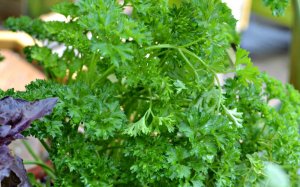
Parsley is more than just a garnish—it’s a nutrient-rich herb that improves both flavor and health. There are two common types of parsley: curly and flat leaf (also known as Italian parsley). The flat leaf is often considered better for cooking, as it offers more flavor.
How to Grow Parsley
Parsley prefers partial to full sun with moist, well-drained soil. Often grown as an annual, though it’s a biennial plant and frequently acts as an evergreen in NC, you need to harvest regularly to ensure it keeps producing. It also freezes and dries well, too, and typically reseeds itself.
How to Use Parsley
- Common garnish for various dishes.
- Added to freshen soups, salads and sauces.
- Blended into smoothies for a health boost.
Fun Fact About Parsley
In ancient Greece, parsley was used in victory wreaths for athletes.
13. Rosemary (Rosmarinus officinalis)
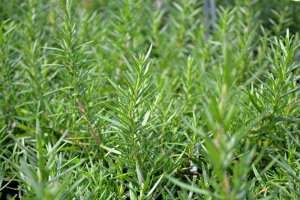
Rosemary is a fragrant herb with needle-like leaves, often used in cooking and herbal remedies. There are so many different varieties—from the genetically engineered Salem rosemary for North Carolina’s climate, to the prostrate rosemary that flowers more than other varieties.
How to Grow Rosemary
As an ornamental evergreen shrub originally from the Meditratian, rosemary thrives in full sun and well-drained soil. It’s also drought-tolerant and requires minimal watering.
How to Use Rosemary
- Enhancing meats, potatoes and bread with its leaves.
- Used in essential oils for its invigorating properties.
- Dried for incense and herbal sachets.
Fun Fact About Rosemary
Ancient cultures linked rosemary to improved memory and placed it under pillows for better dreams.
14. Sage (Salvia officinalis)
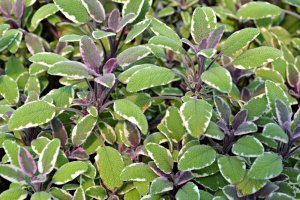
Sage is a hardy herb known for its earthy flavor and medicinal properties. Some types are commonly used in cooking (like berggarten sage and pineapple sage) and others for their healing practices (like purple sage).
How to Grow Sage
Sage is a perennial that prefers full sun and well-drained soil, often growing its best in containers. It’s very drought-tolerant, benefits from occasional pruning and dries and freezes well.
How to Use Sage
- Common in seasoning for meats like sausage and stuffing.
- Brewed into teas for helping with sore throats.
- Pineapple sage in particular is known to attract hummingbirds.
Fun Fact About Sage
Sage was a prized medicinal herb in ancient Rome.
15. Thyme (Thymus)
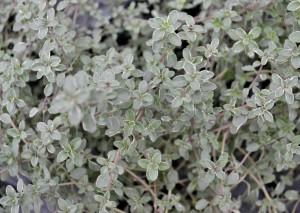
Thyme is a small but mighty herb from the Mediterranean, valued for its culinary, medicinal and aromatic qualities. Between all of its varieties, there are many different flavors to experience (e.g., lemon thyme tastes like lemon and silver-edged has a strong black pepper taste).
How to Grow Thyme
Thyme is easy to grow, flourishing in full sun with well-drained soil. It can be harvested throughout the growing season, typically growing very low to the ground, and can be dried and frozen.
How to Use Thyme
- Adds depth to soups, meats and vegetables.
- Used in natural cleaning sprays for its antimicrobial properties.
- Commonly brewed into tea for respiratory support.
Fun Fact About Thyme
In medieval times, carrying thyme was believed to offer courage and protection
LEARN ABOUT HERB-BASED COCKTAILS
Get the Herbs You Need at Fairview Garden Center
No matter which herbs caught your eye, Fairview Garden Center is here to help you grow a thriving garden. With our wide selection and expert staff, there’s no better place or time to get started.
Visit us in person or give us a call at 919-851-6821 with any questions or requests you have.
Page updated on February 28, 2024

